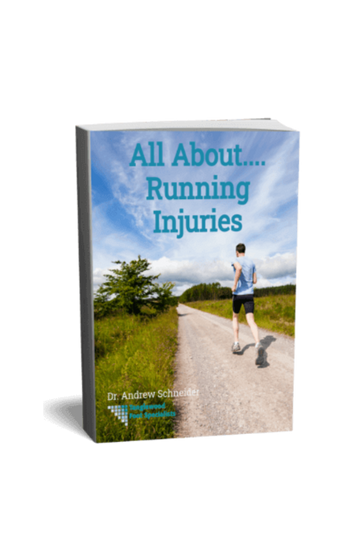How you run can help avoid injuries. There are lots of pieces to your running form. The first part is your heel-strike pattern. Experts debate the best place to hit the ground: with your heel or forefoot. And there's lots of disagreement about which is best, for times and health. 
But here's something interesting from the journal Medicine & Science in Sports & Exercise. One stride isn’t better than the other. They simply put pressure on different parts of your body.
For runners whose heels absorb the first impact, knees took the biggest hit. Forefoot runners experienced more ankle and Achilles injuries. Meaning, no matter how you run, your body is going to absorb some impact. And, depending on where you hurt, you may want to change your gait.
The Key to Good Running Form
Running form is about more than just your heel strike. If you run with your whole body, you can take some impact off your feet. So check out these 5 elements of proper running form:
1. Look ahead
If you look where you're going, you take strain off your neck. Plus, you're less likely to trip!
2. Keep your shoulders down and back
Hunching leaves you with a stiff neck and sore muscles. Until it becomes natural, take a quick pause during your run. Make a real effort to relax and drop your shoulders away from your ears.
3. Swing your arms from the shoulder
Swinging from front to back makes you a more efficient runner. And keeping your elbows bent will save some energy so you run longer without getting tired.
4. Tighten your core![A strong core and relaxed shoulders are good running form to prevent injury]()
5. Don't bounce
The more you bounce, the more you leave the ground. And that means you'll fall harder, putting more pressure on your feet and knees. Try to push your feet forward instead of up to avoid this pain. And try to step lightly when you land. Slapping feet could be a sign of trouble. A 2015 study in the British Journal of Sports Medicine, linked injuries to how hard your feet land.
6. And channel your inner elephant
While this one sounds like a head-scratcher, research from Dublin City University notes that many human-style running gaits contribute to injury risk. However, if you look at animals like elephants, their running style reduces the load to their bodies, thereby decreasing their likelihood of getting hurt. But how can people like us run like these massive mammals? Says lead research Dr. Kieran Moran, the technique is simple. In order to soften the blow of running, elephants are using a form of "cushioned running’ where they flex their hips and knees and keep their main body mass and feet closer to the floor." Try to do the same, and your proper running form could reduce your injury risk.
What to Eat After a Running Injury
Focused on your form, but too hurt to run? That stinks: plain and simple. But here’s the good news. Certain nutrients can help you recover at a quicker pace. Don’t believe me? Read on for some great info courtesy of Runner’s World magazine:
Injury: Stress fracture
Stress fractures are an overuse injury. They're often caused by running long distances or increasing your mileage. Your lower leg bones have the highest risk. That's because your small, tired muscles transfer stress to your bone.
Eat: Calcium and vitamin D
Milk does a body good. The American College of Sports Medicine (ACSM) recommend 1000 mg of calcium when you have a stress fracture. (An 8-ounce glass of milk has about 300 mg.) Dairy foods are an excellent source of calcium. But so are foods like kale, broccoli, bok choy, turnip greens, spinach, soy products, and fortified OJ.
Vitamin D is another bone-friendly nutrient. The best way to get it is from sun exposure. But foods like egg yolks, salmon, mackerel, catfish, tuna, sardines, cod liver oil, and mushrooms can boost your levels. If a blood test revealed you're deficient in vitamin D, your doctor may recommend a supplement.
Injury: Tendonitis or plantar fasciitis
Words ending in ‘itis’ mean inflammation. Tendonitis is an inflammation of the tendon. And plantar fasciitis describes inflammation on the bottom of your foot. Tendonitis is a common injury resulting from overuse or repetitive motions. Increasing your mileage in a short period of time or “running through the pain” can cause this injury.
Eat: Antioxidant-rich foods and good fats
If you’re suffering from an “itis,” eat the rainbow. Antioxidants—inflammation-fighting nutrients—are found in fruits and veggies. And, the darker the produce, the higher it is in antioxidants. When in doubt, opt for dark leafy greens, rich-colored berries, and vibrant root veggies.
You may not want to eat fat when you’re less active. But good, unsaturated fat can actually combat inflammation. Add olive oil or avocado to your salad and dig into that walnut-crusted piece of fish.
Diet plays a big role in your body's ability to heal itself. Still, eating well doesn't replace your podiatrist supervised recovery plan. If you have a running injury, schedule a consultation with Dr. Schneider right away. That's how we'll get you back to training as soon as possible.

.jpeg)




















